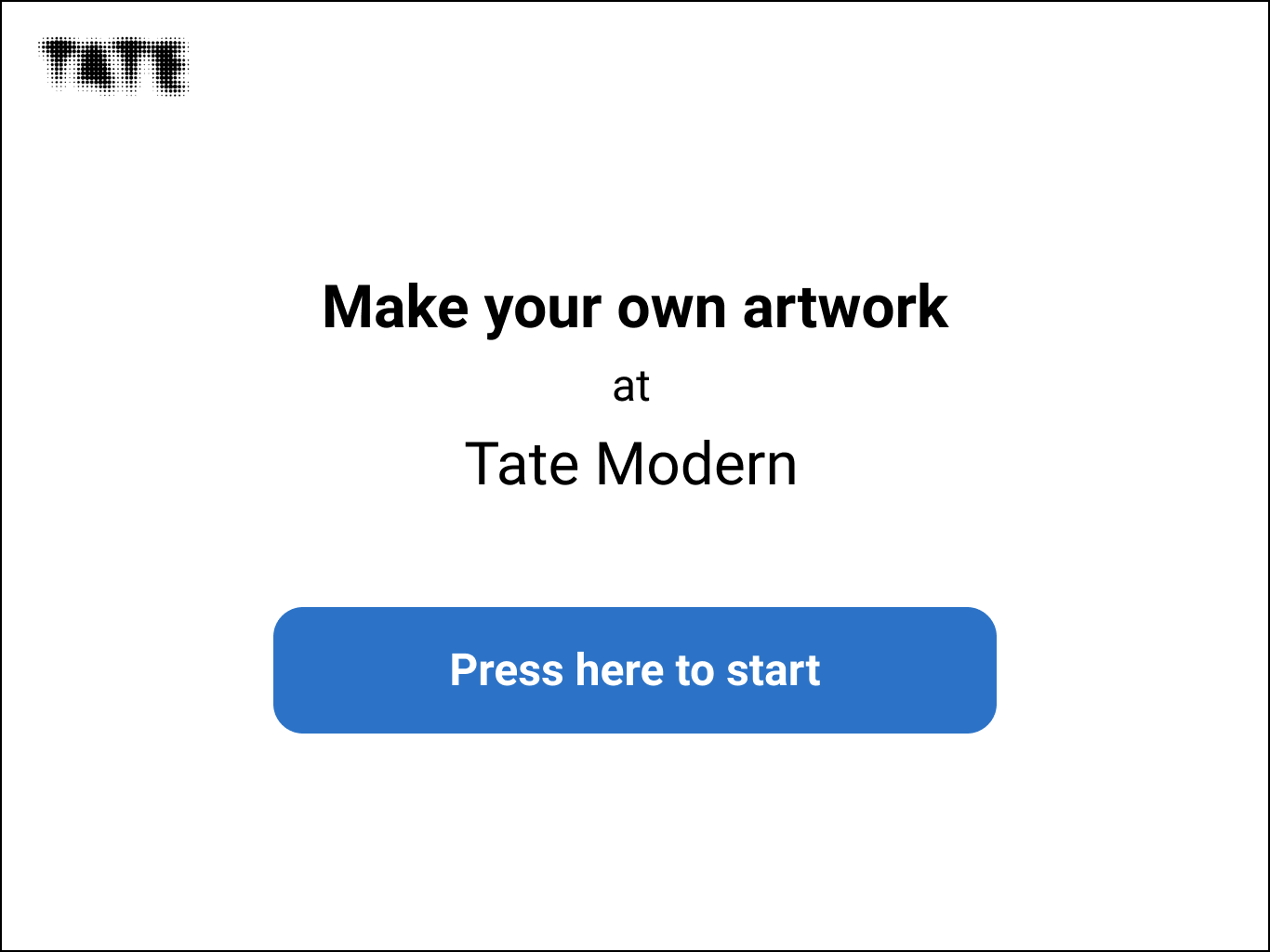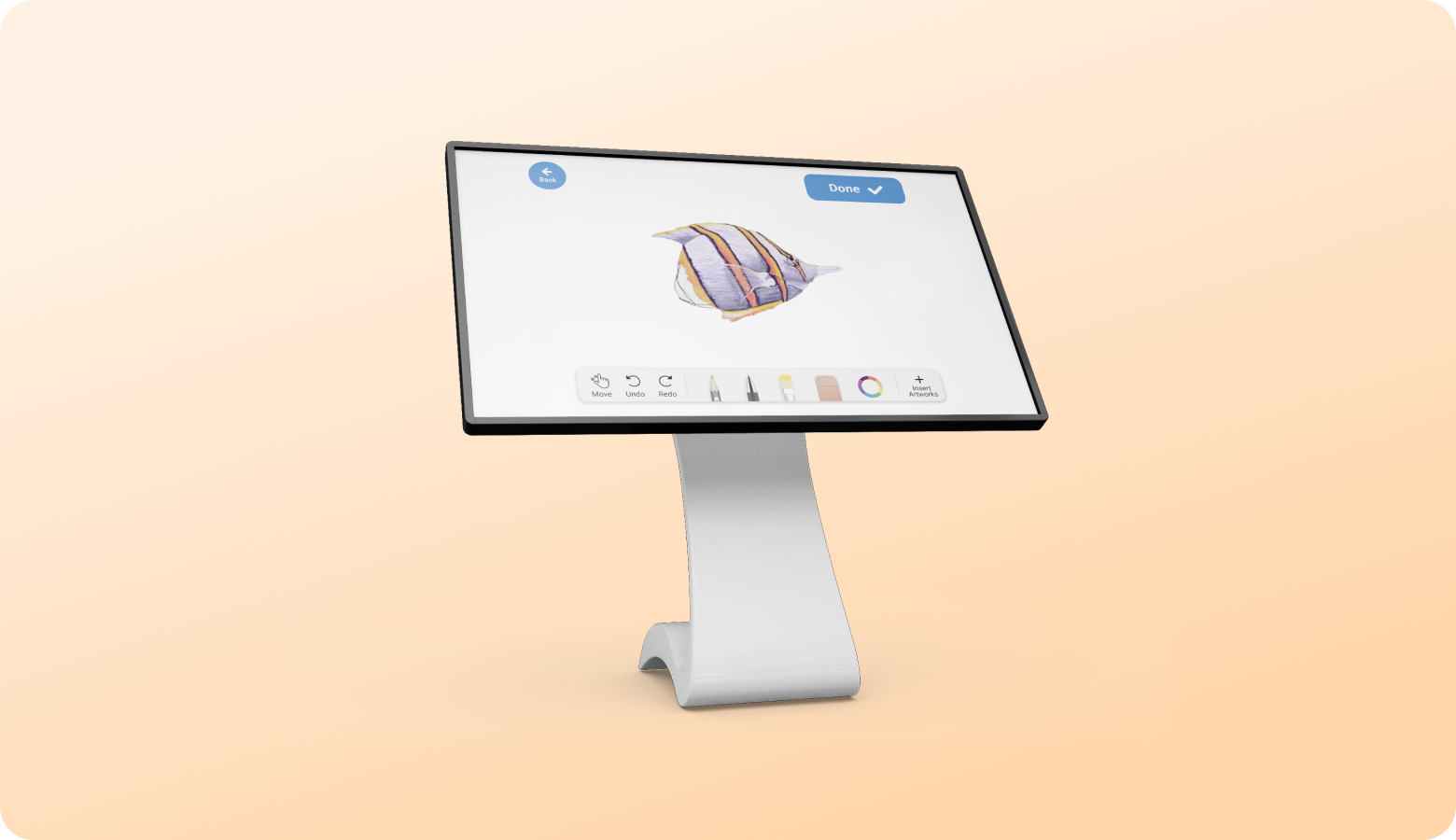
Cre-Tate in Tate Modern
Project Overview
Project TypeKiosk design
RoleUser research, UX/UI design, Evaluation
Time2022 (6 weeks)
ToolsFigma
DescriptionCre-Tate is a kiosk based concept design to offer Tate Modern visitors an interactive and engaging experience. Following initial observations and interviews, the team identified the target audience and the experience they would most enjoy. Through sketching, design work, and several iterations, a user-generated-artwork and an exhibition experience was created.
Design Process

* This is an Interaction Design coursework project at City University of London, and not related to Tate Modern.
Mark: Distinction (79/100).
Background
How might we enhance visitors’ experience at Tate Modern museum with digital technologies?More museums are adapting interactive digital technologies to deliver a better museum experience to visitors these days. Tate Modern also has some digital technologies, but my team thought there might be a more creative and tailored one to answer the question abovementioned.
User Research
The team conducted user research to understand visitors’ behaviours, their goals, and the ways they interact with the physical space. We employed a method of triangulation to collect valid data.
Observation
We observed visitors to assess their natural behaviours. It also allowed the team to explore the physical space and get familiarised ourselves with the atmosphere and popular visitor attractions. The chosen locations were the entrance way (Turbine Hall), the two most popular exhibitions (Materials & Objects and Media Networks), a gift shop and a cafe.
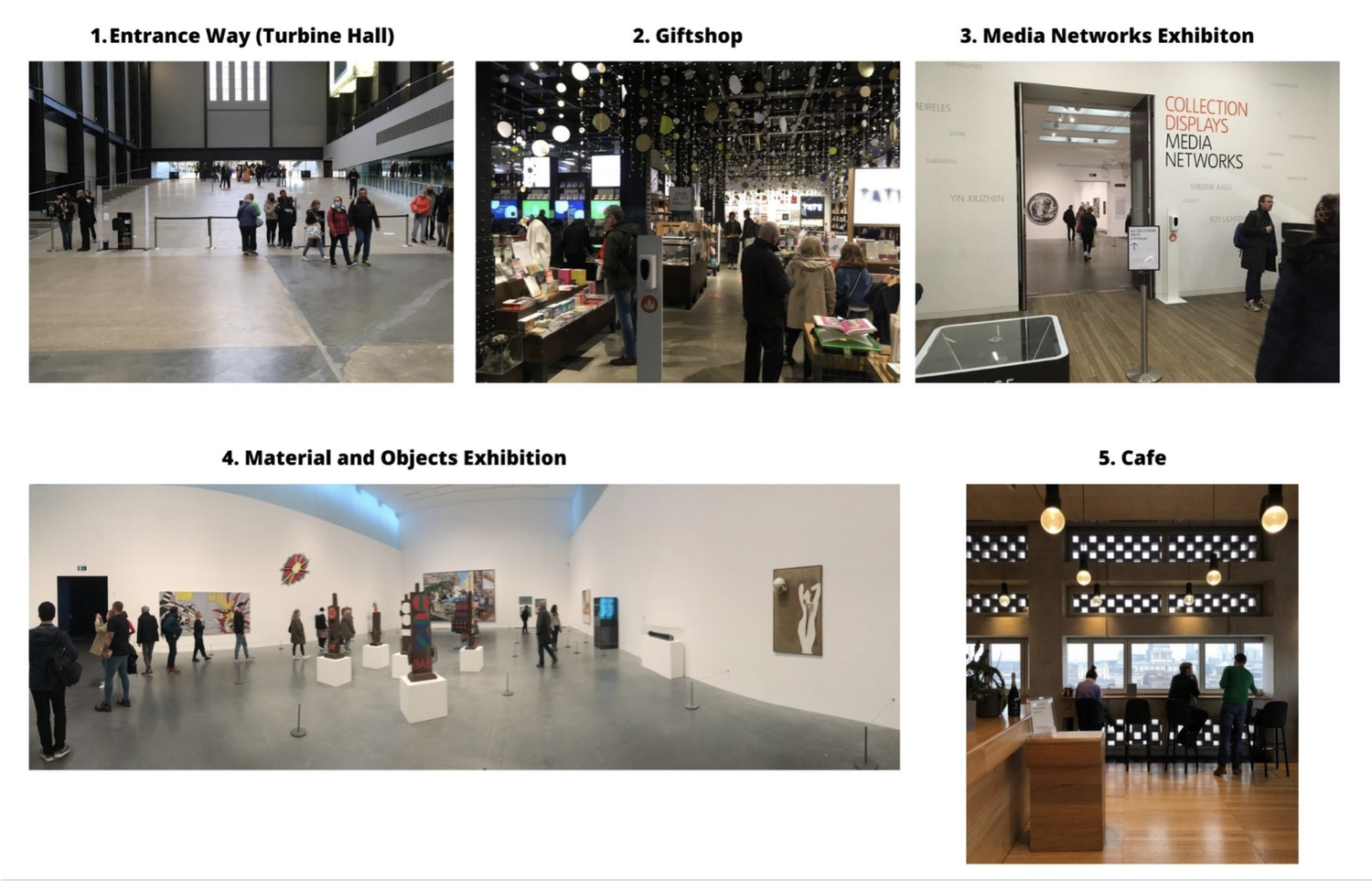
Interviews
The team conducted semi-structured interviews to understand why visitors visit the museum. We constructed each interview question based on the user research goal which was to understand their pain points, needs, goals and motivations. The team recruited 13 interviewees onsite and 2 additional interviews on social media platforms.
Interview questions and simplified responses.Insights
What we learned from our observation and interviews.
- Visitors want to get inspiration from artworks.
- They want to have a more interactive experience.
Conceptual Design
The main objective of this conceptual design step is to create as many ideas that can achieve the design goal. We constructed user personas, a user journey and a storyboard based on all collected data from user research to aid the ideation.
User Personas
The first user persona is a female student, interested in or studying art, and was visiting for inspiration - she is moulded into the primary user persona. The secondary persona was an older, married, male interested in or working in the art industry.
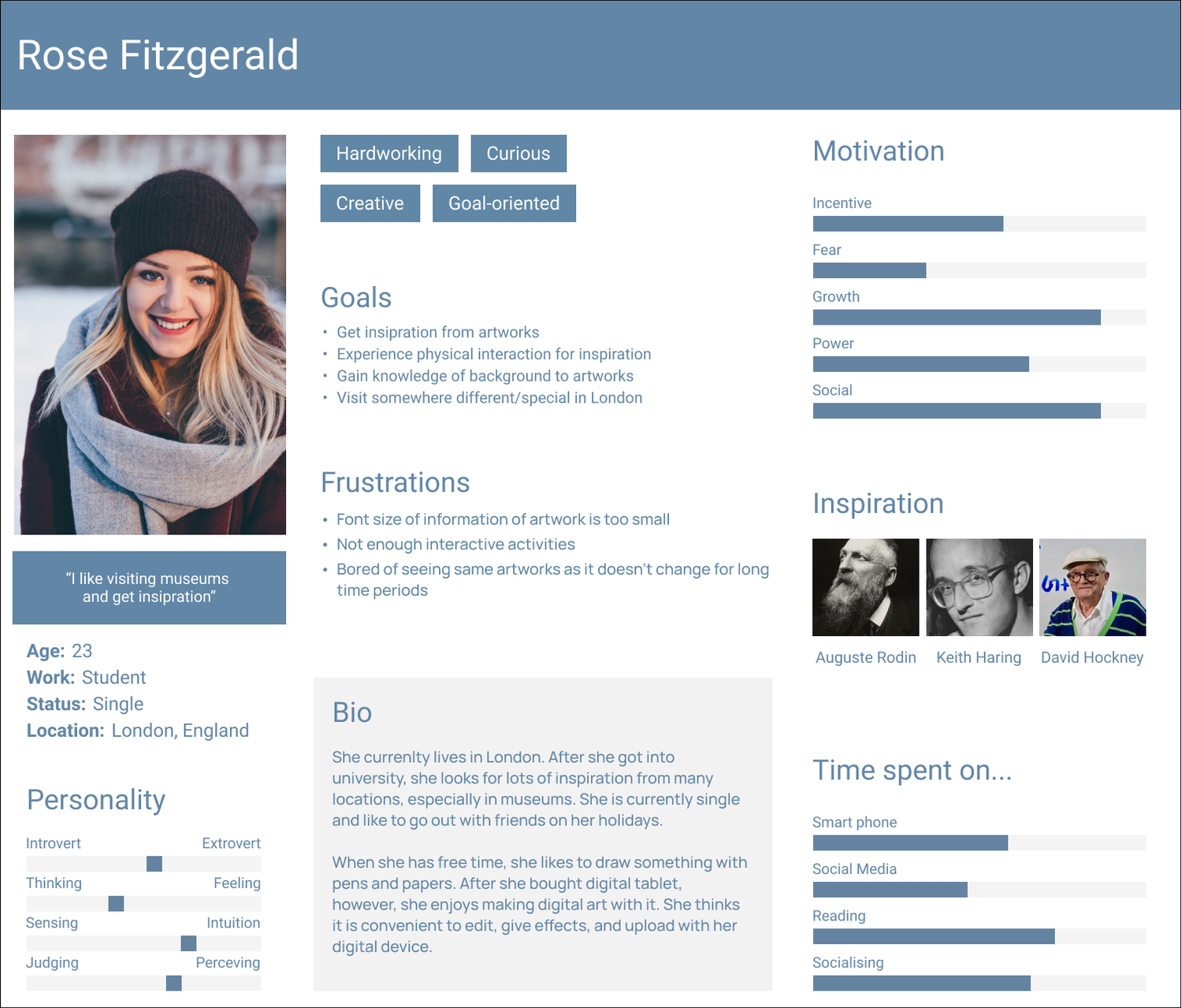
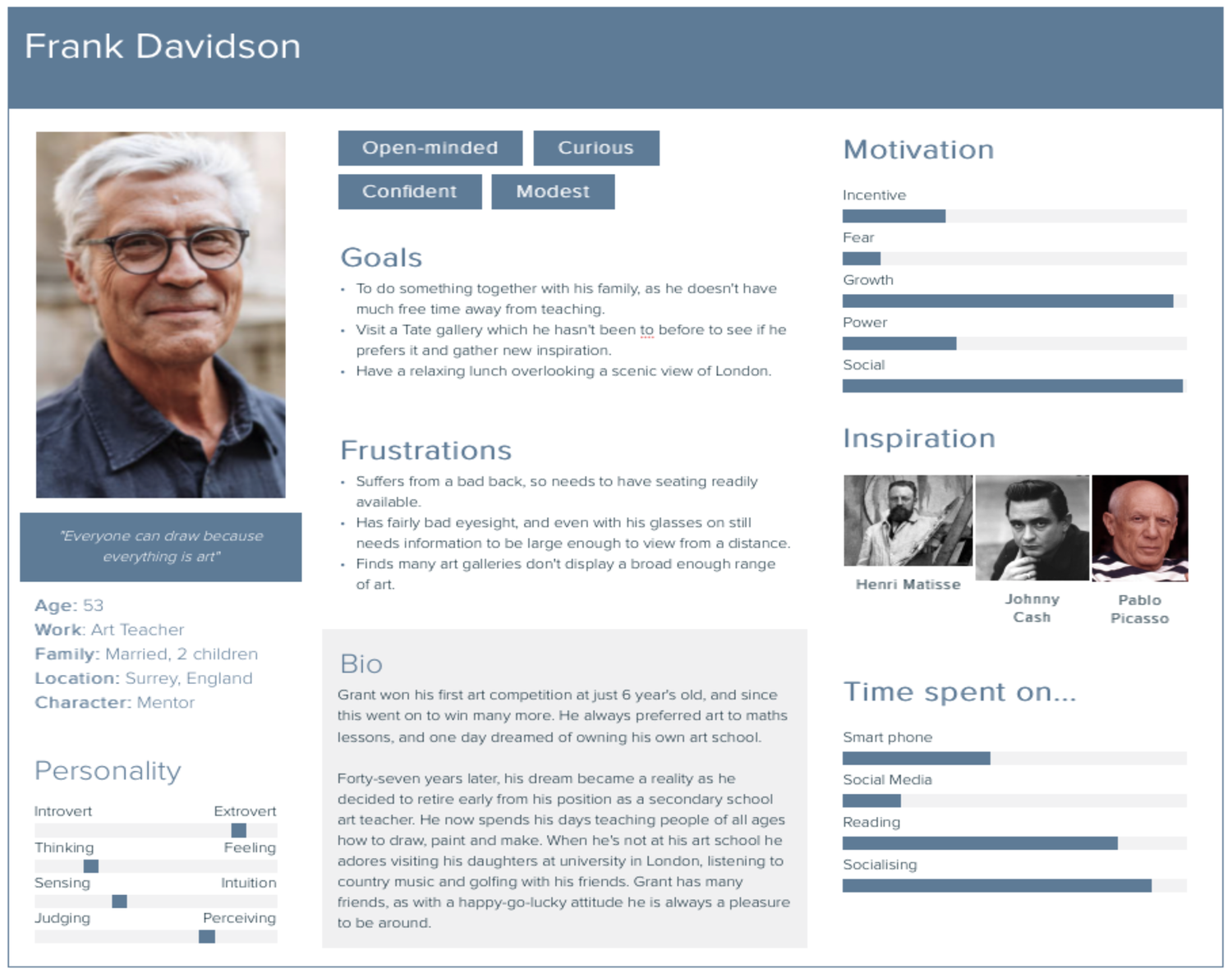
User Journey Map and Storyboard
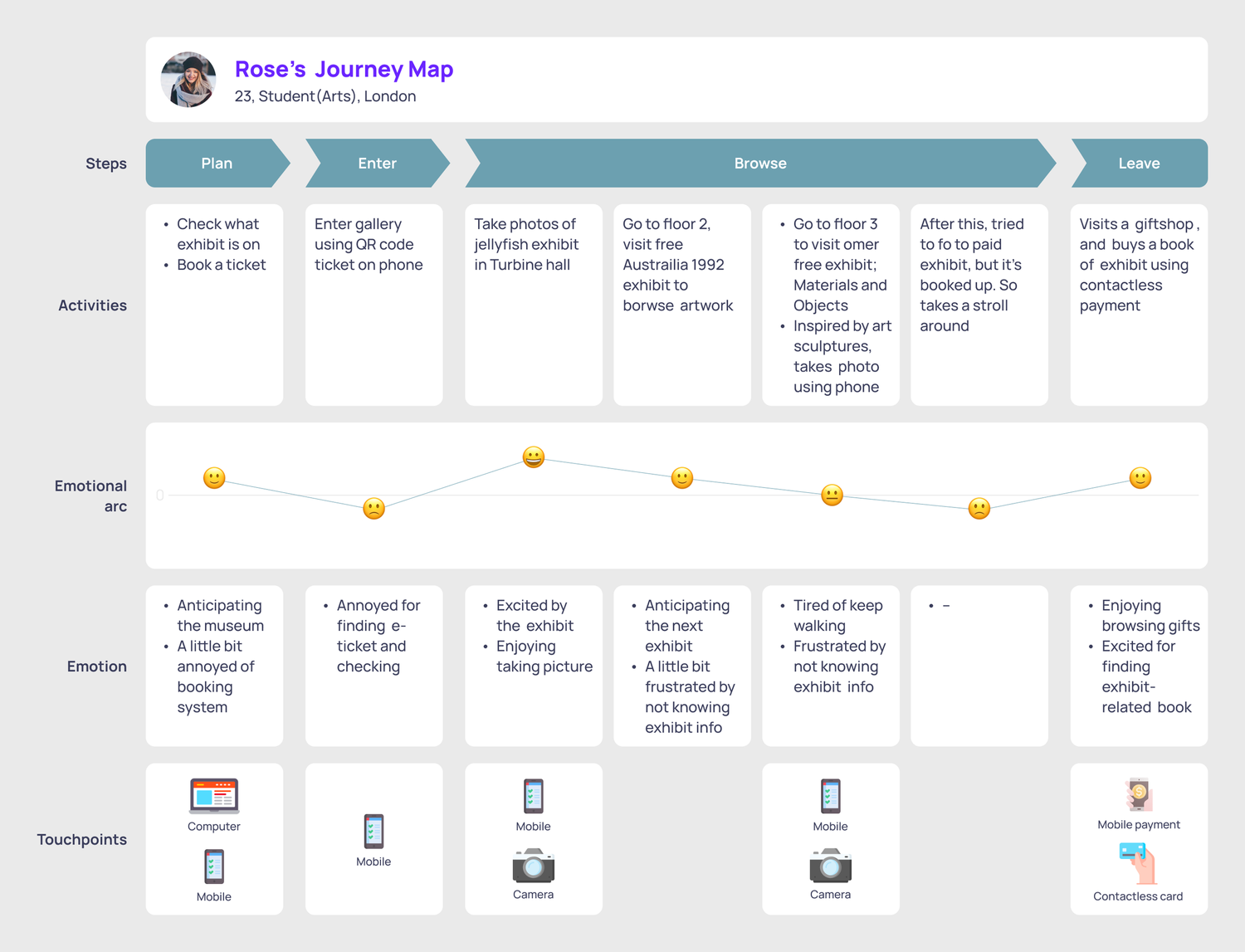
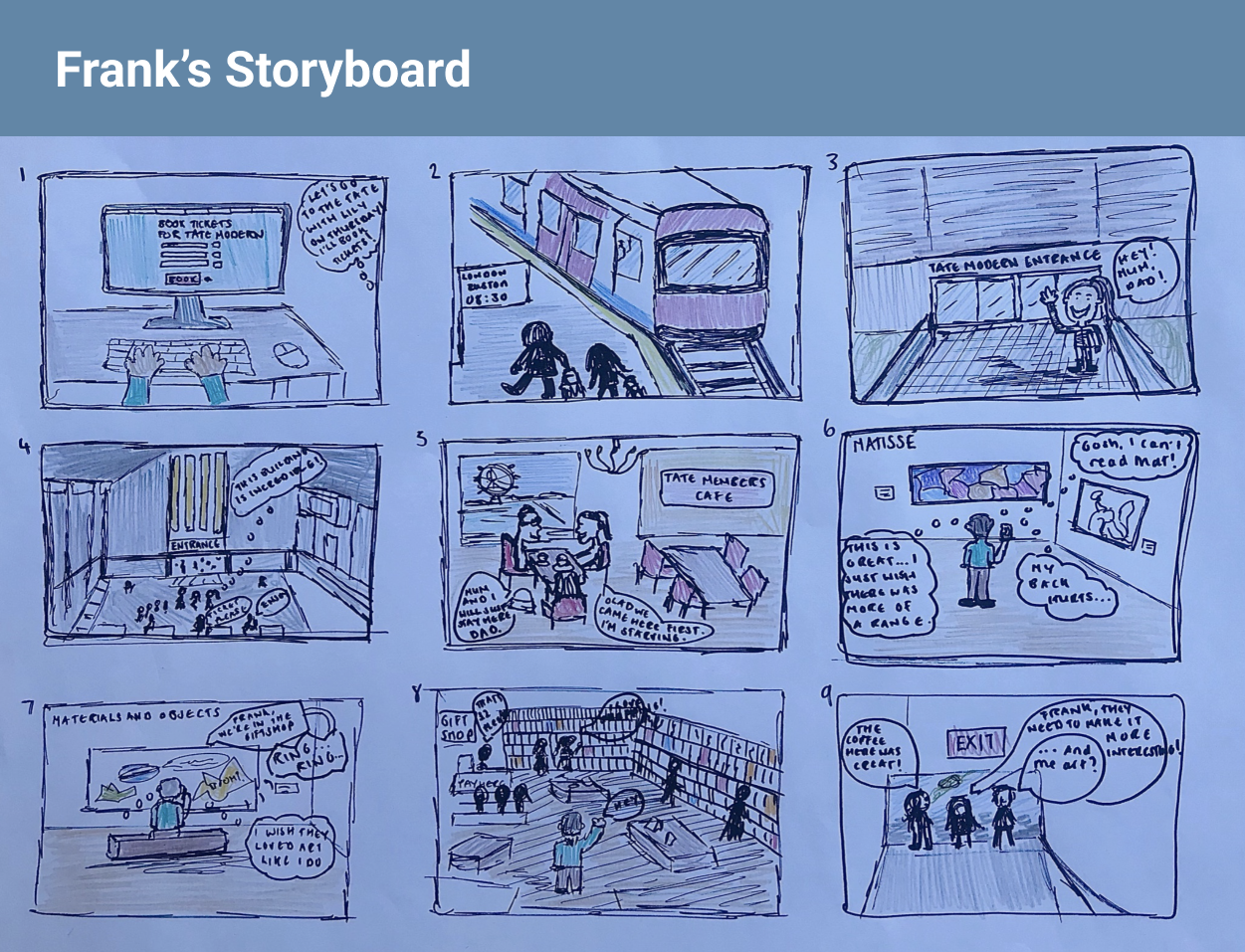
Ideation 1 - How Might We
The ideation phase began as the team possessed empathetic insights to ideate a digital interactive technology. The team carried out a group brainstorming session first using the “How Might We” strategy.
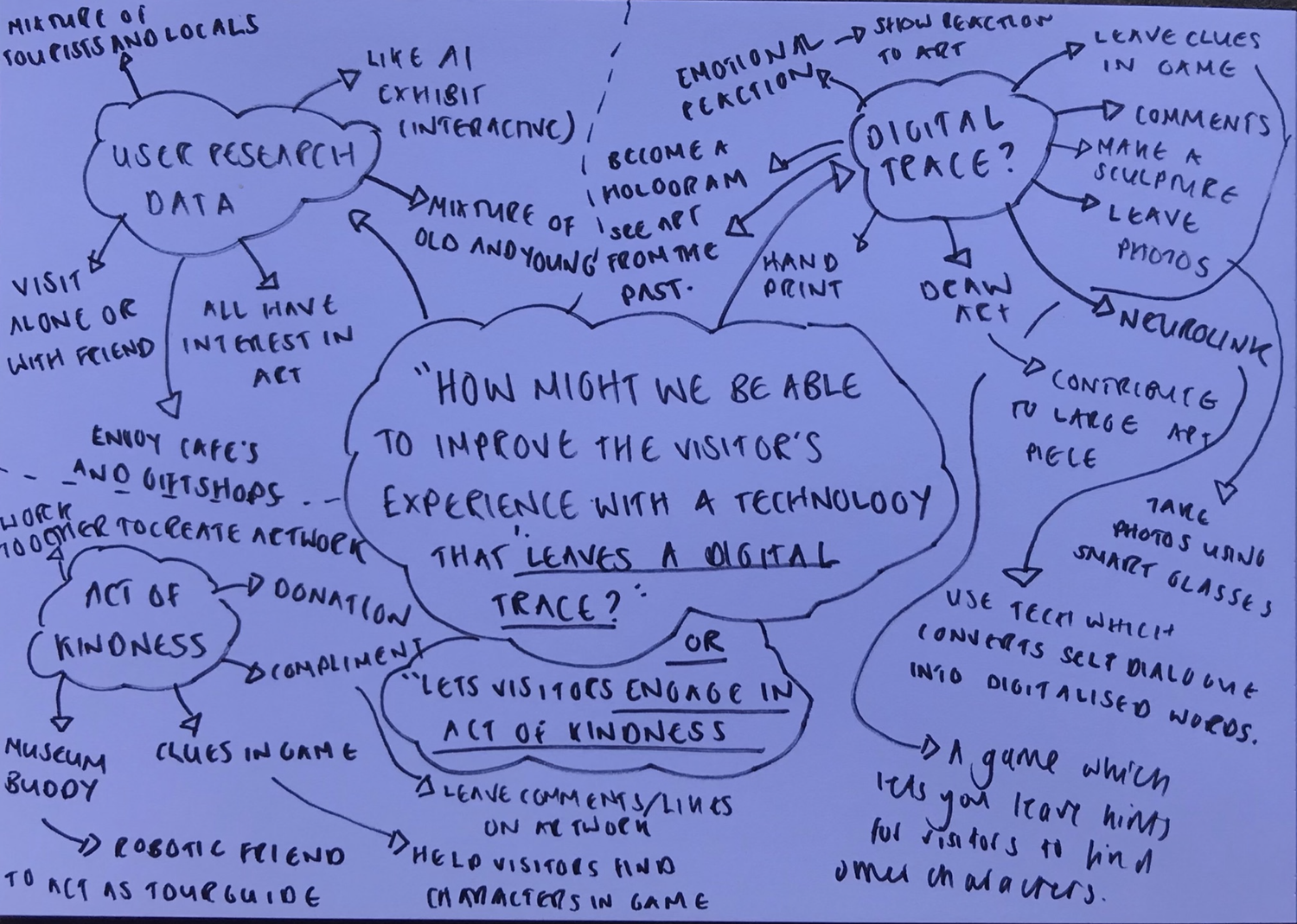
Ideation 2 - Crazy 8s
Each member had eight minutes to sketch eight ideas which prevented overthinking and allowed the team to see explicitly what ideas each member favoured most. This also led to new ideas being proposed in addition to the ideas found in the first ideation meeting.
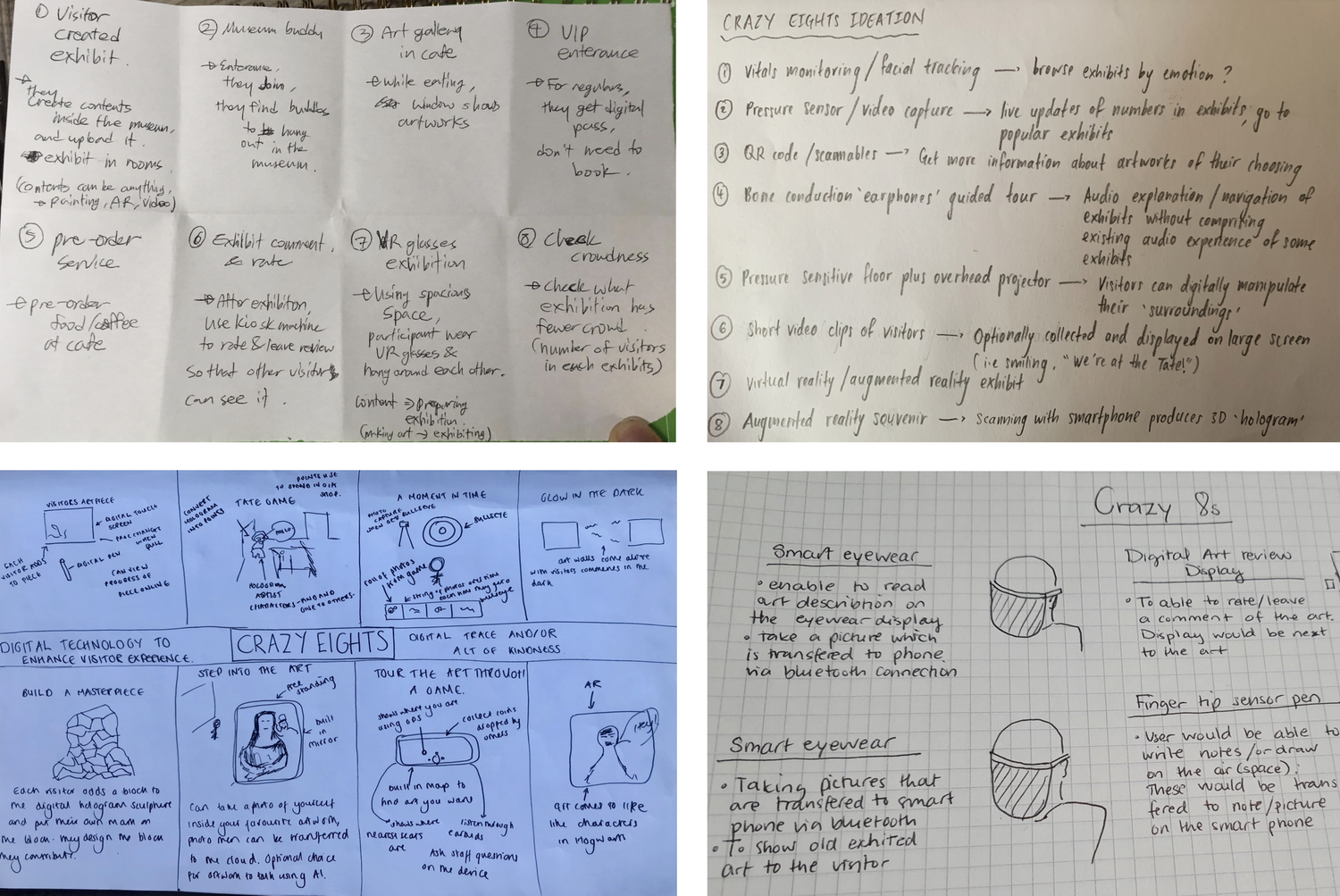
Detailed Design
“Cre-Tate” is an interactive digital product allowing visitors to create a customised digital artwork which can be showcased in a designated exhibition room. Visitors can find Cre-Tate at various points around the gallery which include inside exhibitions, gift shops and cafes.
Low-Fidelity Sketches
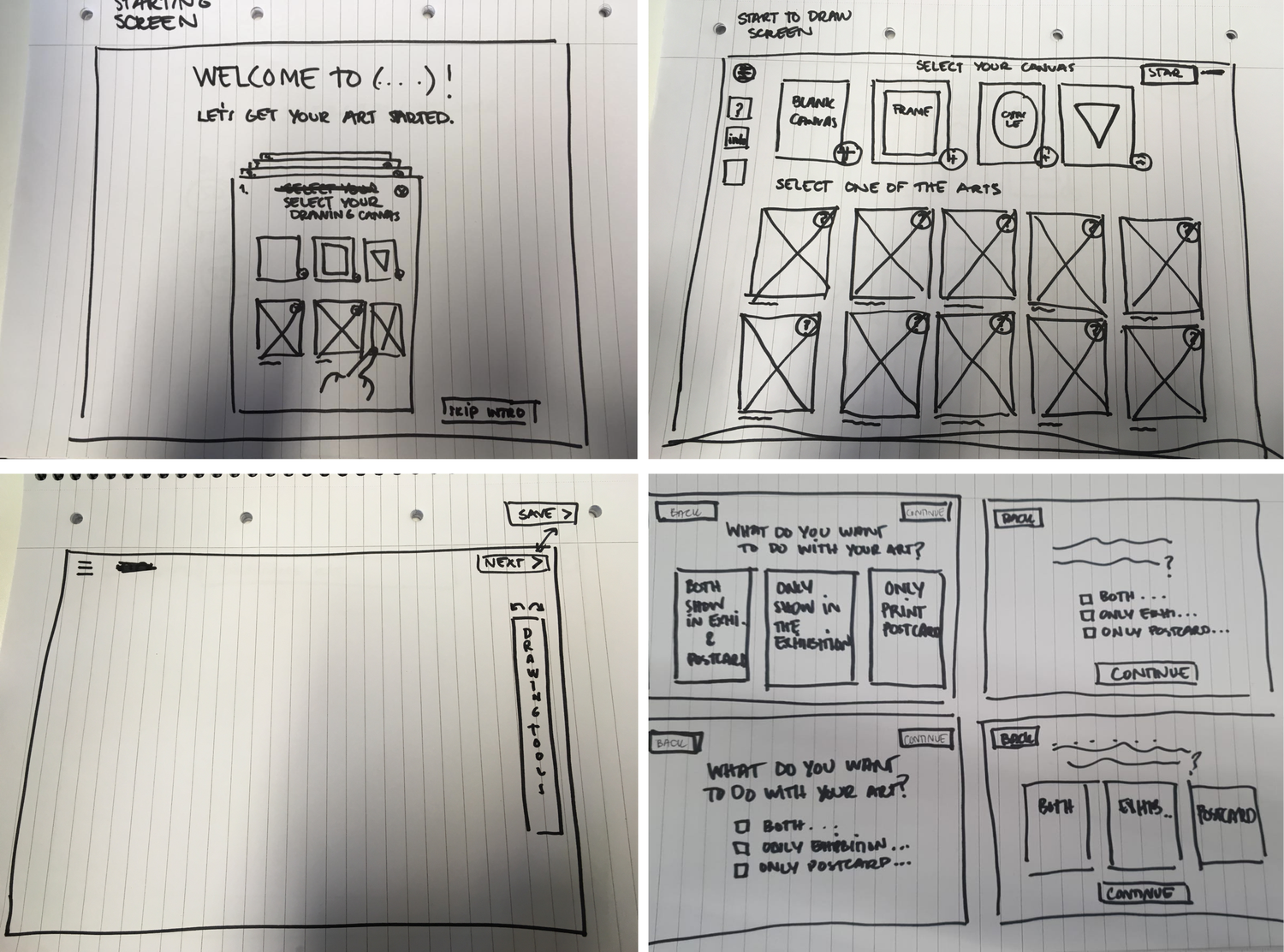
High-Fidelity Prototype
First draft - Main pages only.
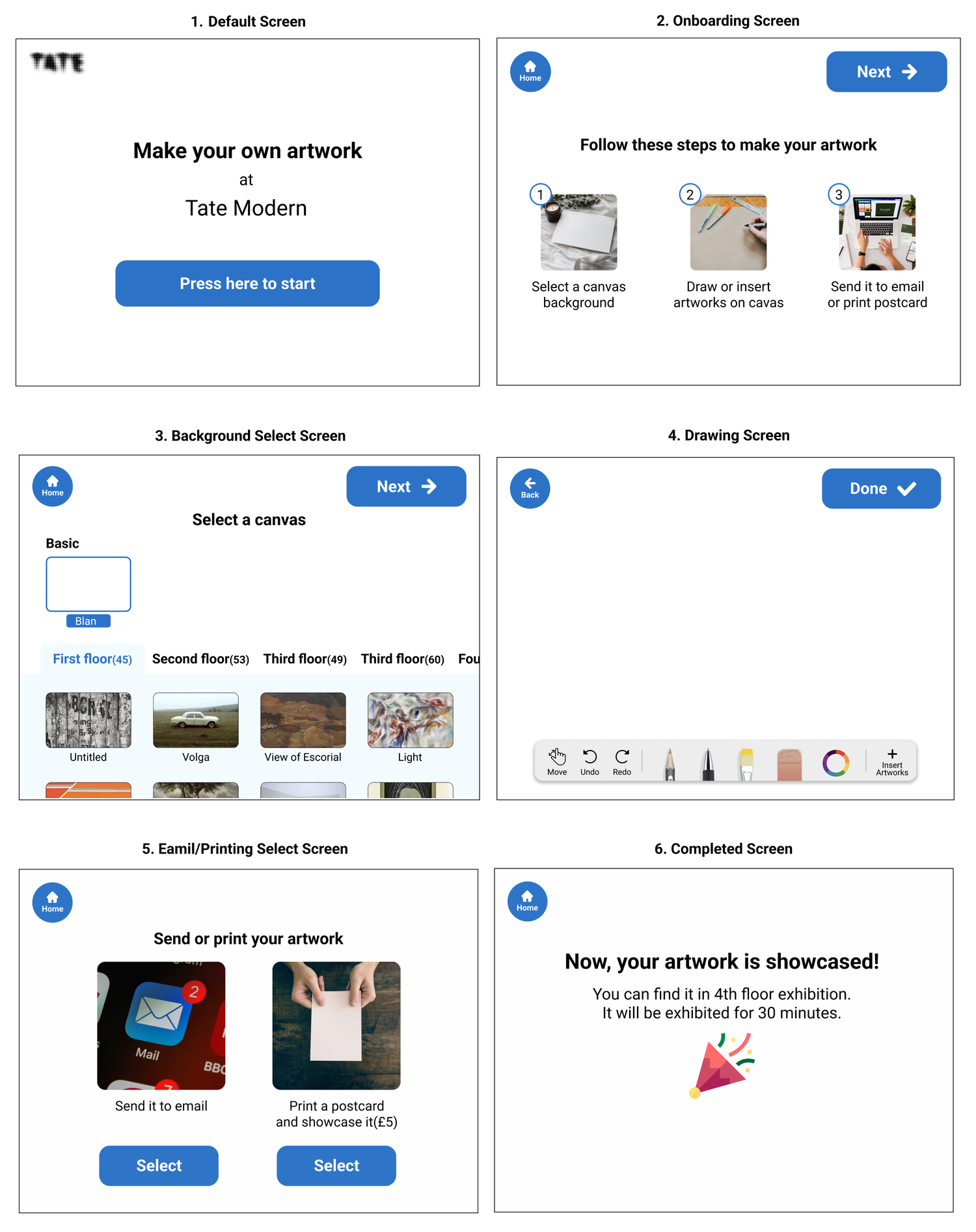
Mockups and Experience

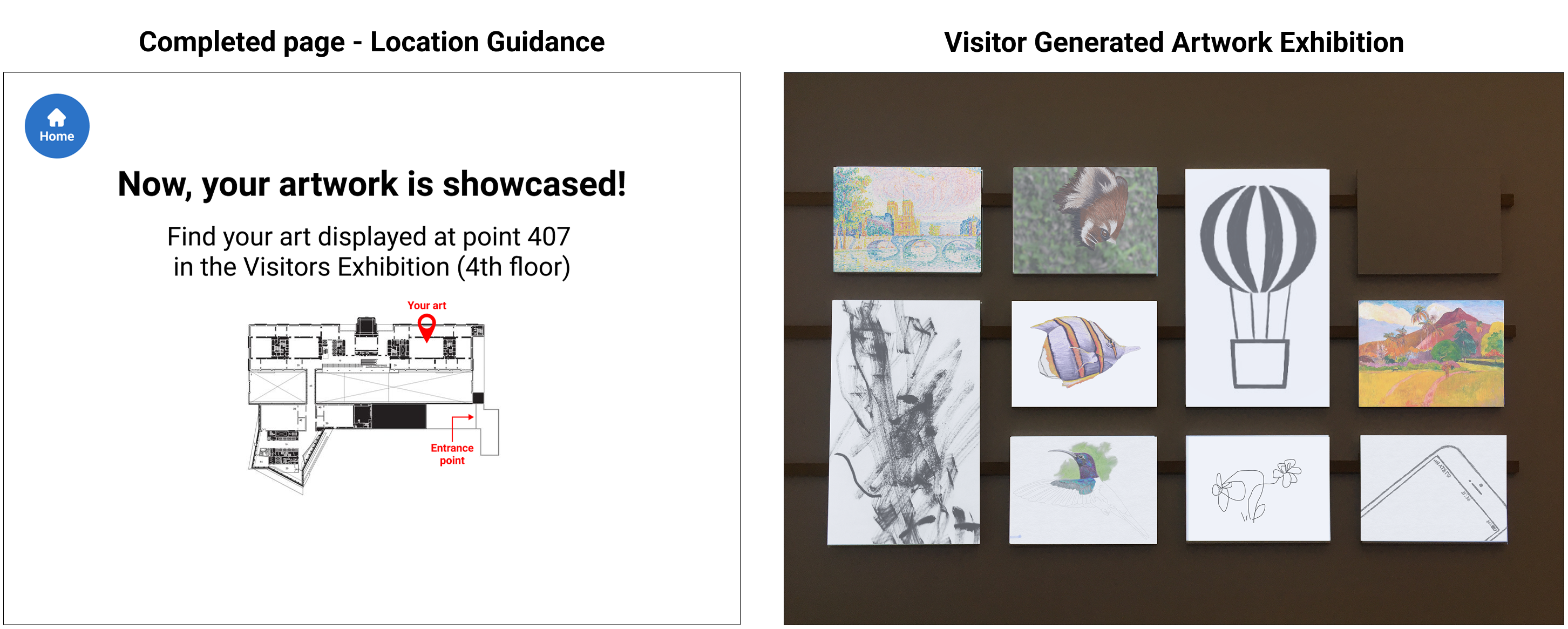
Evaluation and Iterations
Usability Testing
The team recruited participants who would complete two tasks to find out any usability problems or opportunities to improve the product. After they finished both tasks, they filled out a questionnaire about their experience using Cre-Tate.
Usability testing questions and the test results data.Iterations
Based upon observed problems in usability testing, the team improved some screens for a better user experience. The main changes are as follows:
- User flows: Users have more control of what to do during the process (Back button added, more options added after they finished drawing).
- Information delivery: Users can check where their artworks are showcased.
- Labelling and descriptions: More intuitive labelling and descriptions were applied.
- Clear button status: Users are able to know whether a button is activated or not.
Iterated Prototype
Click the image below or this link to interact with it.
